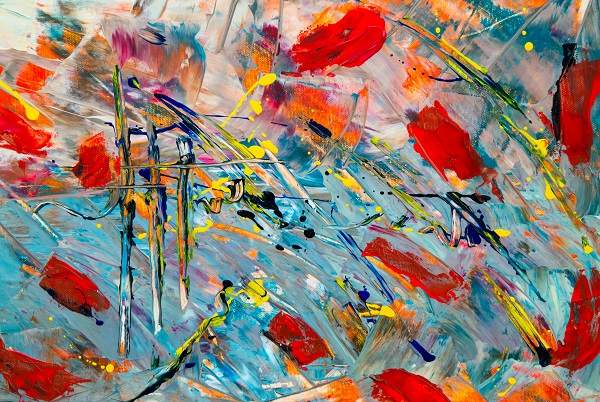All Articles & Guides / Grief / How to Start Planning Your Own Funeral
Art Therapy for Grief
Unfortunately, loss is a part of life, and everyone must grieve at some point. Whether you've lost a pet or a family member, a job, or a relationship, the grieving process takes time. It's more than okay to ask for help and seek counseling to move through your grief. In fact, we encourage it! Many forms of assistance are available, but one has become particularly popular in recent years: art therapy for grief.

What Is Art Therapy?
Art therapy is a recognized form of therapy that encourages the communication of emotion through artistic expression. While it has existed for as long as humans have been around, it wasn't formally recognized and studied until 1940.
Art therapy includes performing arts and visual arts, such as playing an instrument, singing, journaling, drawing, photography, and painting. Most of the research studies on the effectiveness of art therapy have focused on the visual arts. Drawing, painting, and sculpture are usually what come to mind when people mention art therapy.
Benefits of Art Therapy
While talk therapy is well trusted, some people find themselves talking about the same emotions repeatedly as part of the process, and it can be frustrating. Art therapy, on the other hand, doesn't require talking. Using different parts of the brain for expression can also help repressed emotions surface, helping speed the healing process.
Art therapy works for children and adults, although the activities may be different for children. For example, journaling prompts for children may be simpler than those for adults. Tools used for creating art may differ, depending on age, like using crayons versus acrylic paints.
A Professional's Experience with Art Therapy
We spoke to Laurie, a mental health professional and lifelong artist, about her experience using art therapy with her patients. She explains that grief therapy is "very close to trauma therapy, because grief is traumatic. Grief is a trauma, but it has a whole other darkness to it, people tend to bury it. It's harder to access it." Here are some of her tips for trying art therapy:
- Paint or draw: What worked best for trauma for Laurie's clients was "not thinking specifically about the trauma or death/grief, but just drawing according to your feelings. It can be kind of hard to do, but it also tends to be the best way to process the feelings."
- Don't overthink it: Laurie tells us, "Let it come from inside without having a specific idea of what you want to draw. Just start drawing or painting." She further explains, "The main thing with grief is getting the feelings out somehow – whether it's sadness, anger, hope, or even hate. You need to get the feelings out. Process it outside of your body. Let it flow out without intent."
- Use watercolors: "Put certain colors on a paper. Let them gravitate towards whatever the picture is supposed to be."
According to Laurie, "Grief is often a mixture of feelings, and you have to process them to release them. Grief is so mixed up, so art therapy is a way to get things out without specifically focusing on one thing or becoming overwhelmed." She tells of a former client who enjoyed drawing, but had difficulty getting past the trauma, so he focused on a religious element, which allowed him to process the trauma without feeling overwhelmed.
Grief Art Therapy Activities
When you seek a professional art therapist, they will determine what activities are best for you and your situation. Here are some examples of what you might encounter:
- Writing prompts: These may be the beginnings of sentences, like "I wish I had told him…" or "My favorite memories with her are…" You'll be encouraged to let your answers flow without worrying about spelling or grammatical mistakes.
- Writing with your non-dominant hand: Separate your conscious thoughts from your subconscious by closing your eyes and just letting words flow without thinking about them. This is another modality Laurie used in her practice.
- Memory box: Create and decorate a memory box to be filled with important documents, mementos, photographs, or letters to the deceased. If you don't want to start from scratch, Perfect Memorials offers a beautiful, engravable bereavement memory box at an affordable price.
- Painting: Starting with a blank canvas, put anything on it that comes from your heart. It doesn't have to be museum-quality; it only needs to be an authentic representation of how you're feeling.
- Photo collage: Use your favorite images of your loved one to create a memorial collage to hang on a wall, or create a video montage to their favorite song or a song that conveys your feelings about their loss.
- Listening to music: Whether you're listening to a playlist of their favorite tunes or listening to music that evokes your feelings, like classical or gospel, songs can have healing power.
- Sculpture: You don't have to be a professional to find sculpting therapeutic. From carving a grief mask to molding children's clay, the act of creating a piece of three-dimensional artwork can make you feel better.
There is no right or wrong form of art therapy. Use the modality that speaks to you most or that comes to you most naturally. If you still aren't sure where to start, contact a professional grief counselor for help.
Related Content





